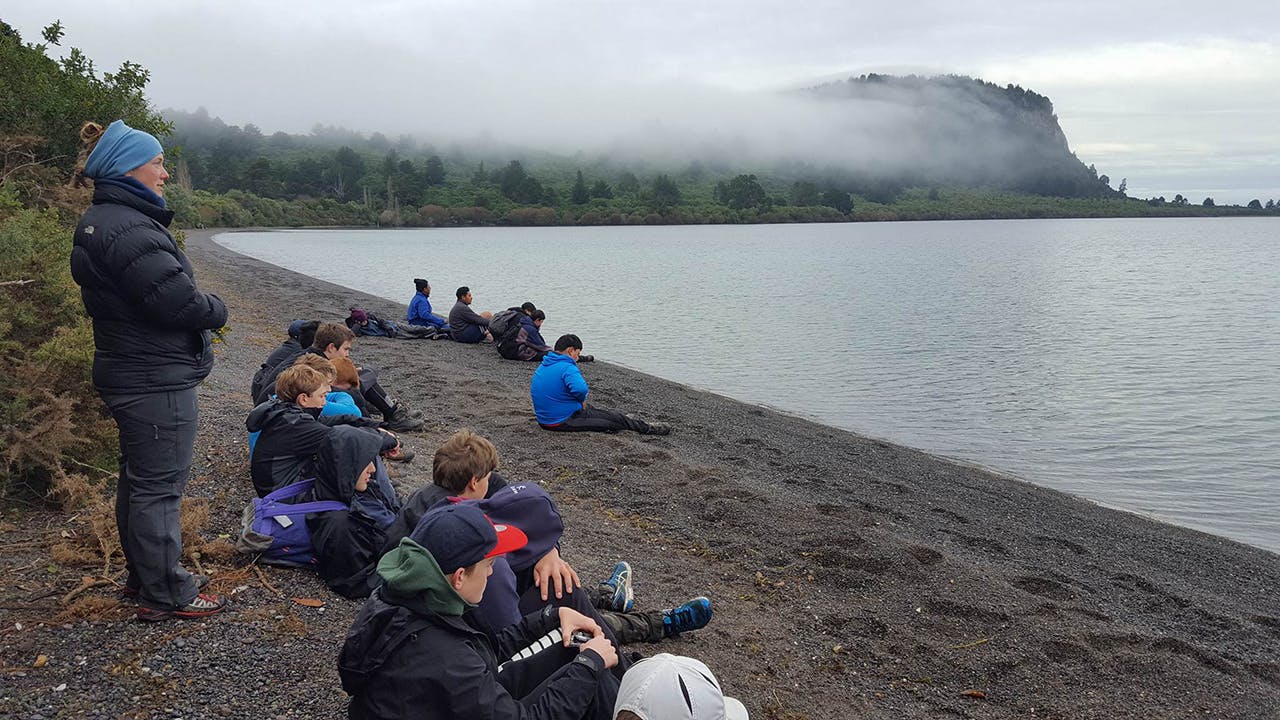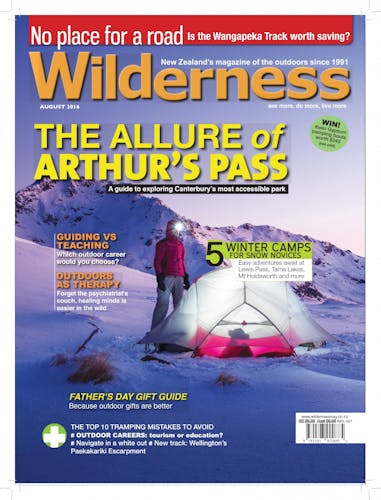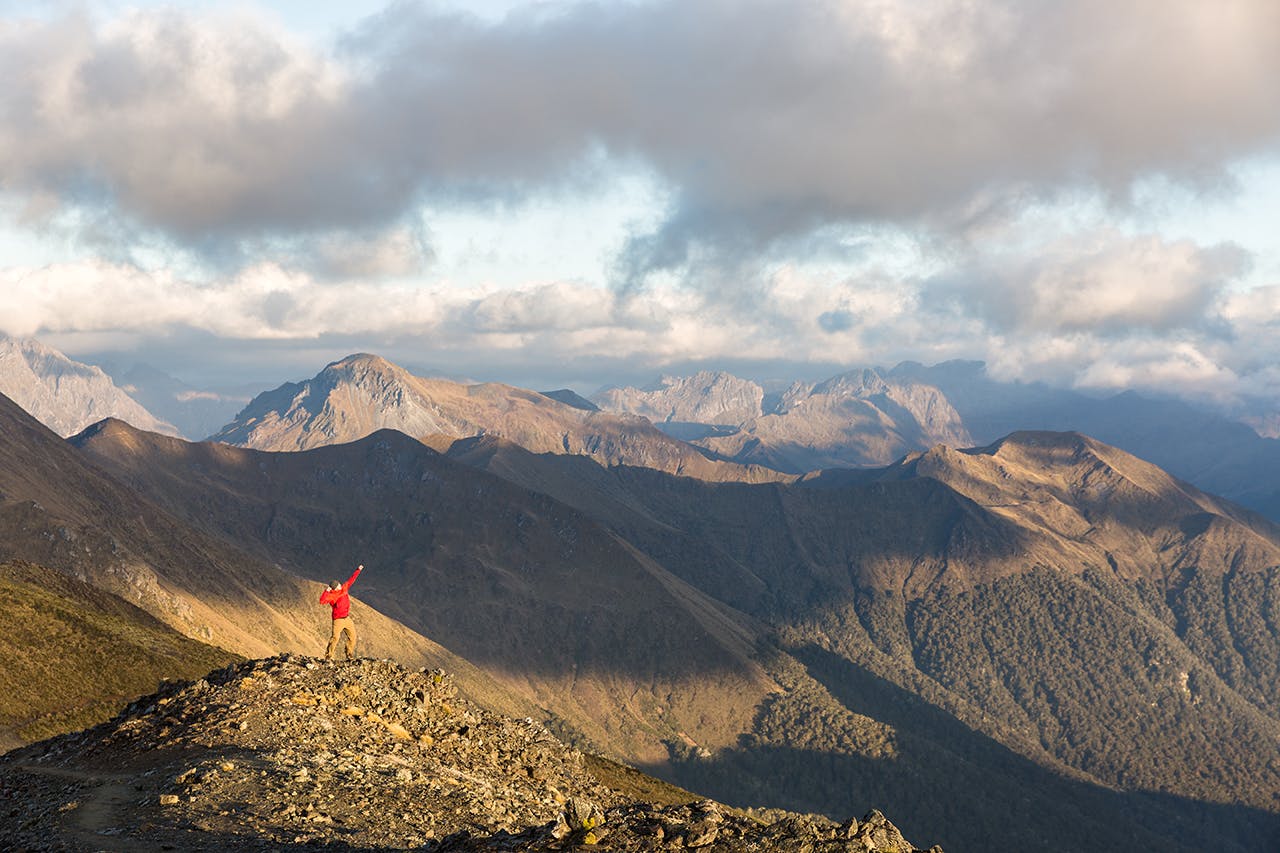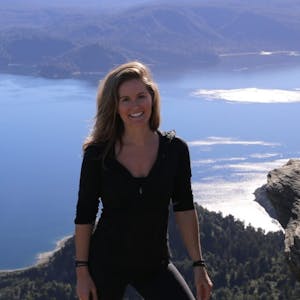Going for a tramp makes us feel great, so it’s little wonder mental health professionals are turning to the outdoors as a way to treat patients
The Japanese call it shinrin-yoku, or forest bathing.
In Norwegian, it’s friluftsliv; ‘living in tune with nature’.
The Dutch, on the other hand, say, uitwaaien; which means ‘to walk in the wind’.
In their essence, each of these words refers to the healing power of nature; that soothing clarity that descends upon every outdoors-person when stepping out of the city and into the wilderness.
You likely felt it on your last tramp, bike ride or trail run: the combination of fresh air, bird song, and exercise just made you feel good. There’s a growing body of research that shows what happens to us when we get outside: stress levels go down, and we think more clearly.
A Japanese study led by Yoshifumi Miyazaki from Chiba University found that for a group of 60-year-olds, just two hours in the forest lowered stress levels.
Another study from the University of Michigan showed that time spent in natural environments improved memory and concentration. The study, led by Dr. Marc Berman, found that an hour-long walk in the park improved participants’ memory and attention tests by 20 per cent, compared to walking for an hour in a noisy urban environment.
Getting outside to feel good is a simple concept, yet it’s transforming the way mental health practitioners are approaching therapy.
Amy Horn witnesses the therapeutic quality of the wilderness on a regular basis. As a guide for Adventure Specialties Trust, she works with groups of young people and families, facilitating half-day trips through to 10-day journeys in the outdoors.
She combines her background in social work with her knowledge of outdoor education to design programmes that involve adventure activities with personal and social development.
Horn sees a wide range of participants in her work, but often will lead groups of young people on therapeutic trips. The big difference between outdoor education trips and therapy-focused trips is intent, she says.
“An outdoor education group might turn up to a rock climbing session and our intent is to teach them how to tie knots and climb and belay well, and learn the technical aspects of rock climbing,” Horn explains.
“A therapeutic group might turn up and our intent is not actually about technical rock climbing at all, it’s about focusing on something else, depending on what that group needs. It might be around trust – can you trust the person who is belaying you, can you be a trustworthy person, how we build trust with our friends at home, and how we build trust with people here. Our focus will be completely around those social dynamics, rather than the technical aspects.“
Horn’s interest in the subject brought her to the wilderness therapy symposium in the United States. She says there’s a difference between wilderness therapy and adventure therapy. Wilderness therapy, common in the US, often entails extended eight- to 10-week trips in which participants will spend most of the time on foot in the desert, sleeping under tent flies and cooking over an open fire. It’s rugged, remote, and removed from society.
Adventure therapy is more common in New Zealand, which Horn describes as outdoor experiences with a particular experiential focus, but over a shorter period of time.
“In wilderness therapy, the focus is on very basic, primitive skills. Whereas in adventure therapy you might include a variety of adventure activities. You might do bush walking, but you would also do rock climbing, or sea kayaking.”
One of Horn’s goals is to start a wilderness adventure therapy programme that includes the variety of adventure activities, but for longer trips.
Having worked as a social worker, Horn is well-versed in the office-based approach to therapy, but sees it as limiting. She says adventure therapy provides a setting for in-the-moment problem-solving, conflict resolution, and self-discovery that is far more effective than traditional, more sedentary therapy practices.
“Teenagers do not like sitting in therapy offices talking to adults about problems that adults think [teenagers] have. Teenagers don’t even think they’ve got a problem, and they certainly don’t want to sit in an office and talk about it when they’re a 15-year-old boy,” Horn says.
“But when you can get them kayaking, and you can talk about waves, and how emotions are like waves, then they can talk about that – they get that. Or, if you get them to light a fire together, and a conflict arises, that’s very real, and you can talk about it right then and there. It’s more real than sitting in an office talking about something that happened two weeks ago.”
“It’s engaging, fun and real, and it’s not contrived – they love it.”
It’s not just kids that Horn has seen benefit from adventure therapy. She used to work for Outward Bound, leading 21-day trips with groups of adults. She says the biggest shift she sees in adults is more cognitive.
She recalls an experience with a man on a high-ropes course at the Outward Bound campus at Anakiwa. She says the man was stuck on one of the obstacles, clinging to a pole, unwilling to let go to carry on with the course.
“He kept saying, ‘I want to go forward, I want to, but I can’t let go’. So I asked him, ‘Is that what you always do in life?’.”
When the man came down, he agreed with Horn; that he always holds on to things, rather than moving forward into the life that he wants.
“That’s the biggest thing for adults – realising the thinking patterns they’ve been stuck in for a long time. Being pushed out of the everyday things they do, into a new environment with new people, gives them the confidence and vision to move into something they really want.”

A youth group on a therapeutic trip with Amy Horn
Helen Jeffery is a senior lecturer at Otago Polytechnic School of Occupational Therapy. She says that of all the mental health professions, occupational therapists are perhaps the most appropriate providers of adventure therapy.
Because occupational therapy uses movement and activity for healing, it goes hand-in-hand with the concepts of adventure therapy.
“The adventure therapy process is in part about challenge-by-choice concepts,” Jeffery says. By providing people with challenging activities and environments that are outside their comfort zones, there is an inevitable shift in personal development.
The challenge-by-choice concept is multifaceted: one of the first steps is getting a person outside their normal environment. Just being someplace new has a profound effect on a person, Jeffery says, particularly if it’s unfamiliar both physically and socially. That means getting people away from home, their workplace or school, and into the outdoors, with a group of new people.
“As well as a personal sense of achievement, they get this group synergy. They work together as a team and develop relationships outside of their normal social circle, and often people are able to reinvent themselves, and take on roles that they wouldn’t ordinarily take on, such as being a leader.”
Another important element is the perception of risk, Jeffery says.
“The idea is to have the person feel uncomfortable, as if they’re doing something that’s really scary, hard and challenging. And if they have those feelings, once they succeed, they have this sense of mastery that is much, much higher than it is for an activity that they would consider to be easy.”
Jeffery says part of the reason adventure or wilderness therapy can be so successful is simply due to the biological response our bodies have to the natural environment. Research shows that being away from the built environment has a calming effect; even just looking at images of nature can have a healthful benefit.
However, an important element in adventure therapy is the actual activity.
“When going for a long tramp, or climbing, or sailing, often people become quite engrossed in the activity and have to concentrate very hard, and everything else in their life just gets pushed to the back, which can be incredibly energising and refreshing.”
And, perhaps the opposite of that, Jeffery says, is the opportunity to mull things over on a long tramp during which the movements are repetitive and enduring. The activity then becomes an opportunity to let go of everyday worries.
While adventure therapy is practiced in New Zealand, Jeffery said there’s been little progress in incorporating it into the healthcare system. It tends to be a more expensive method of therapy – it’s certainly cheaper to put someone in an office with a therapist rather than hiring gear and instructors for a kayaking or multi-day tramping trip.
But, she hopes to see training in it emerge as a tertiary offering for those qualified in occupational therapy, social work, and other mental health fields.
Sarah McGuire is an outdoor guide, life coach, and bodywork therapist, and believes in the healing aspect of nature. She’s developing tailor-made wellness trips for clients in the Nelson-Marlborough region.
McGuire’s motivation for offering outdoor-based therapy comes from her own experience coping after her mother’s death to cancer. Her work as a guide during that time enabled her to experience first-hand the healing power of the outdoors.
“I was motivated by my own personal journey of being able to go into the outdoors, inundated with emotions, and feeling that sense of connecting and clearing when I came out from those journeys,” McGuire says.
McGuire’s company, Wellness New Zealand, will incorporate tramping, yoga, meditation, and tai chi. The intent is to provide an opportunity for individuals or groups to experience the healing benefits of activities whilst in nature, allowing for freedom of thought and movement.
“It’s a very natural process for people to go on a pilgrimage and leave things behind,” she says. “It’s like as we eat through what we have in our backpacks, we also start to leave our [emotional] baggage behind on the track.”
McGuire began incorporating therapeutic concepts into her work several years ago with guiding company Southern Wilderness, where she regularly witnessed people on the trail go through personal transformations. As a therapist, she’s accustomed to the mental processes that occur in healing, but finds that it all seems to happen more quickly once her clients get out of the office and into the bush.
“That was the missing link to the work,” McGuire says.
Offering therapy sessions both outdoors and in the office, she has witnessed breakthroughs in her clients’ success. McGuire says clients’ problems often become crystal clear when they’re on the trail surrounded by trees and birds instead of cars and traffic lights.
“Sleeping in a tent, and walking for a whole day, and being in your body – not on the computer screen – without all the distractions, to share yourself with other people; it allows people to be free,” McGuire explains.
“Freedom allows for people to stop and think about who they are, and what they want in their lives, so they have the opportunity to change.”








